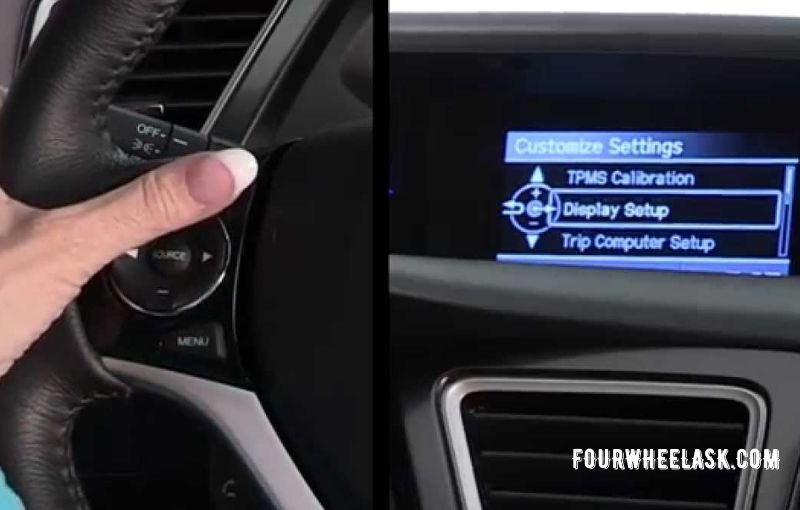What Does TPMS Calibration Mean? (Understanding TPMS Calibration)
TPMS stands for Tire Pressure Monitoring System. This is basically a module that can sense the amount of air pressure inside the tire and send the data to the ECU or car dashboard. So What Does TPMS Calibration Mean?
TPMS calibration means setting up a pressure range for the module so that the system can use it as a standard value. Whenever air pressure inside the tire is lower or higher than this value, it will provide a warning sign. And thus helps to maintain a safe pressure for driving.
For different vehicles, there can be many ways of calibration of the TPMS module. Here in this article, you’ll get ideas about how you can do it and why it’s necessary to maintain. So, let’s get started.

What is the purpose of TPMS?
TPMS is the latest technology that indicates whether the pressure inside the tires is okay or not. Since any unwanted changes in tire pressure can lead to other severe issues, it’s important to maintain appropriate pressure.
That’s why in modern tires, there is this module located inside the wheel. Mostly it is seen on the inner part of the rim. When the pressure is too high or too low, the sensor gets triggered. Then it sends related data to the ECU or Electric control unit.
Thus the data is shown on the computer dashboard. So, if you see the TPMS sign there, don’t forget to check the tire pressure immediately.
What do you need to calibrate TPMS?
Sometimes the TPMS sensor can behave atypically. This can be due to any damage to the sensor. In that case, calibrating is not a solution.
But very often the tire pressure sensor stops sending a warning even if the sensor is working properly. In that case, maybe the sensor is not calibrated properly. So, it has no idea about what the pressure threshold should be and when it should send warnings.
So, it results in irregular or anomalous readings. To overcome this problem you need to calibrate the sensor. There are several ways of doing this. Here I’ll be mentioning the easiest and universal method of doing this.
Read also >> Relearn Tire Position Meaning – A Guide To Proper Tire Maintenance
How to calibrate TPMS? the easy way
Some latest model vehicles come with TPMS that can calibrate itself automatically. Some models need to deflate the tires to calibrate the sensor. In that case, all you need to do is to release all the air from the tire and then inflate it from zero pressure. Thus the sensor will be calibrated.
Another method is also popular for many cars. The step-by-step is described below.
- First, turn on the engine, check whether the TPMS is working properly and start driving.
- Keep the speed and about 50 mph or more.
- Drive for about 30 minutes without stopping.
- Then stop the car engine and you are done.
The next time you start the car, the TPMS will be calibrated automatically to its standard pressure range.
Calibrating the Tire Pressure Monitoring System (TPMS) >> Check out the video below:
What is the problem if TPMS is not calibrated?
There are many issues that can appear if TPMS is not calibrated. Here I’m explaining some of those problems.
- TPMS light On:
Sometimes, even if the tire pressure is completely okay, you may see the TPMS light is still on. This may be happening because the module is not calibrated and it is passing the wrong info to the dashboard.
- Wrong warning:
Often people see that the tires of their vehicle are under inflated, but the TPMS is saying the opposite. This is also a result of a fault in TPMS calibration. In that case, resetting or recalibration can solve this issue.
- Tire damage:
If the calibration is not okay, it’ll show wrong information. So, you won’t know if your tire is under pressure or over inflated. Both of these situations are harmful to the tires since it increases the wear rate and the change of blowout.
So, you can see that a simple calibration of a little part of the whole automobile can lead to serious damage to the vehicle. That’s why, you should be careful about the module calibration and check it regularly to avoid any unwanted circumstances.
TPMS Calibration related FAQ
It takes approximately 30 minutes to calibrate TPMS.
Yes, absolutely. You can do TPMS calibration all by yourself since it doesn’t require any technical skill.
Some vehicles can recalibrate the TPMS automatically when the tire is completely deflated and re-inflated.
Verdict
TPMS calibration means setting the tire pressure sensor to the optimum value so that it can detect whether the tire pressure is okay or not.
If the calibration is not okay, you may get irrelevant data regarding pressure. For example, if your tire pressure is completely okay, still you may see the TPMS light is ON. This is nothing but a problem from the TPMS module. So, it’s really necessary to maintain the calibration.
There are many ways of calibrating TPMS. If you are failing to perform it yourself, don’t hesitate to discuss with professionals before it brings more problems for your loving vehicle.

Certification: BSc in Mechanical Engineering
Education: Mechanical engineer
Lives In: 539 W Commerce St, Dallas, TX 75208, USA
Md Rofiqul is an auto mechanic student and writer with over half a decade of experience in the automotive field. He has worked with top automotive brands such as Lexus, Quantum, and also owns two automotive blogs autocarneed.com and taxiwiz.com.





